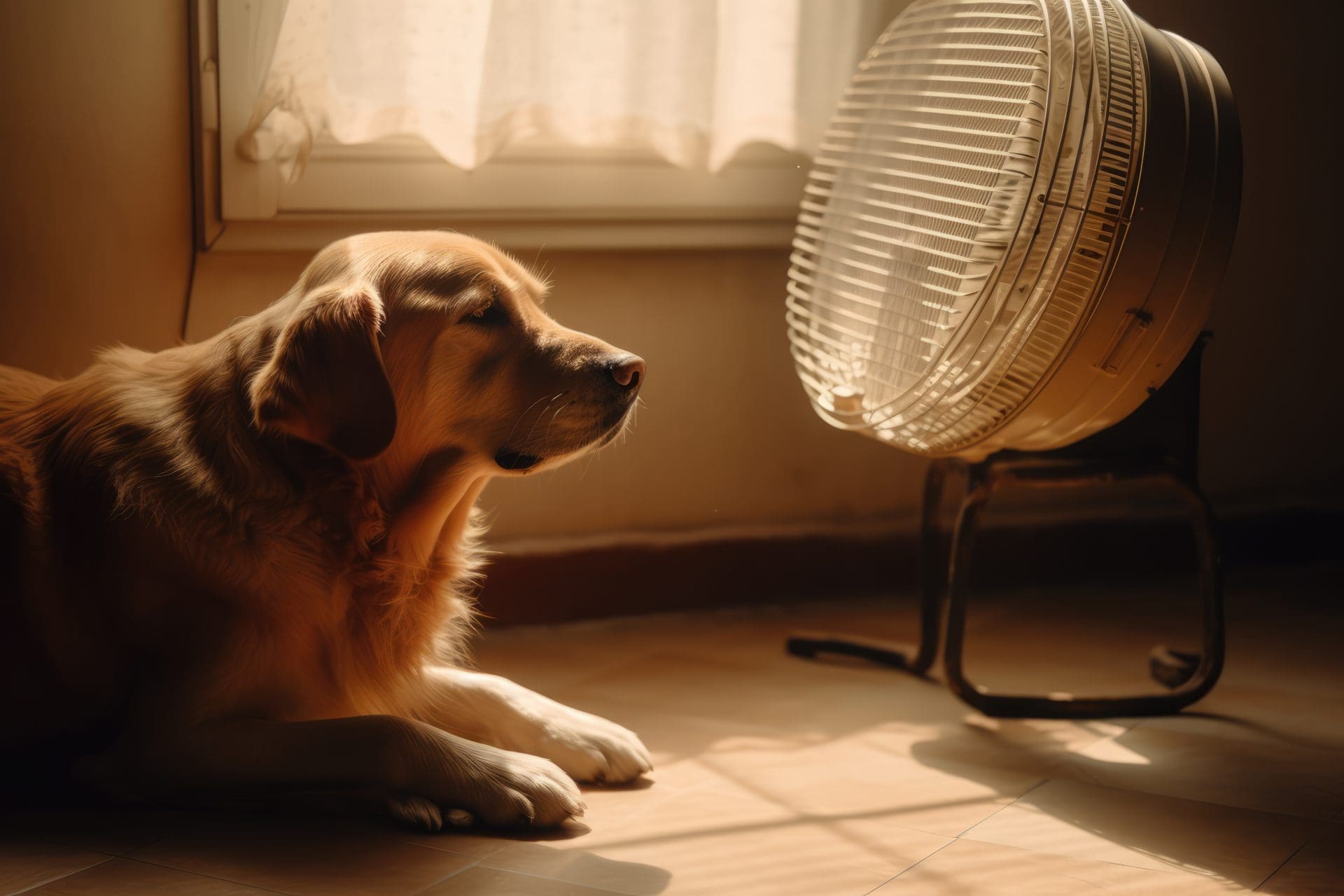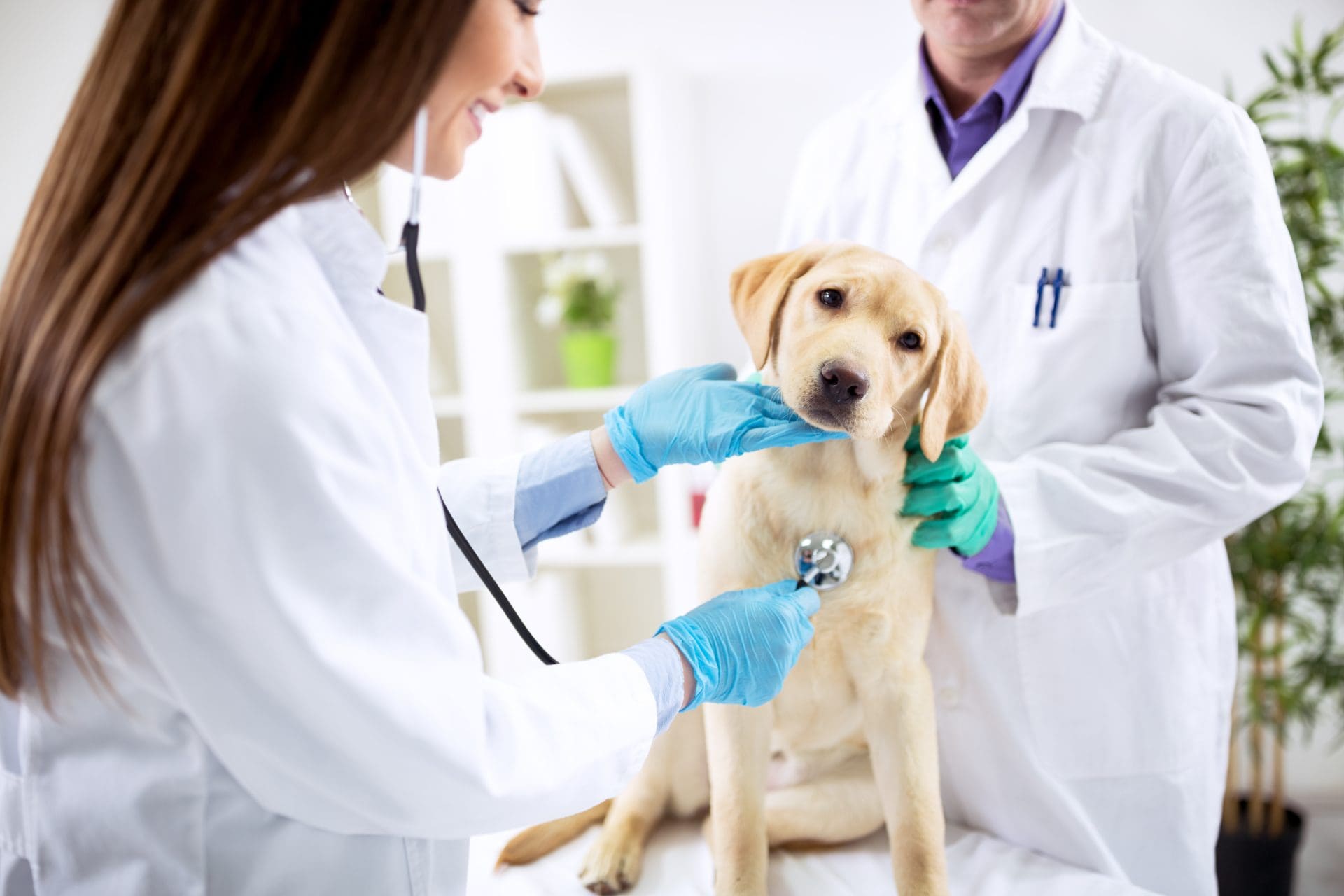As the summer months approach in, it’s essential to be aware of the risks of heat stroke in dogs. With temperatures rising in Kelowna, our furry friends are at an increased risk of heat stroke, which can lead to serious health issues or even be fatal. In this comprehensive guide, we will cover everything you need to know about dog heatstroke symptoms and treatments, including frequently asked questions and how to prevent it.
What is Heat Stroke?
Heat stroke is a severe form of hyperthermia (elevated body temperature) that occurs when a dog’s body absorbs more heat than it can dissipate. Unlike humans, dogs cannot sweat through their skin and rely on panting to cool down. When the temperature becomes too high, their cooling mechanisms fail, leading to a dangerous rise in body temperature.
How Do I Know If My Dog Has Heat Stroke?

Recognizing the symptoms of heat stroke early can save your dog’s life. Here are some common signs to look out for:
- Heavy panting and drooling
- Red or pale gums
- Rapid heart rate
- Vomiting or diarrhea
- Weakness or lethargy
- Staggering or collapsing
- Seizures
If you observe any of these symptoms, it’s crucial to act quickly and seek veterinary care.
What Are the Three Stages of Heat Stroke in a Dog?
Understanding the progression of heat stroke in dogs can help in identifying and treating it promptly:
- Early Stage Heat Stroke: Heavy panting, red gums, and rapid heart rate.
- Middle Stage Heat Stroke: Weakness, vomiting, diarrhea, and confusion.
- Advanced Stage Heat Stroke: Collapse, seizures, and unconsciousness.
How to Tell the Difference Between Heat Stroke and Exhaustion in Dogs?
Heat stroke and exhaustion in dogs share similar symptoms, but heat stroke is far more severe. Exhaustion in dogs may present with heavy panting and tiredness, but the dog will usually recover with rest and hydration. Heat stroke in dogs, on the other hand, involves more severe symptoms like vomiting, collapse, and seizures, requiring immediate medical attention.
How to Keep your Dog Cool?

How to cool an overheated dog effectively, follow these steps:
- Hydration: Offer small sips of water.
- Cool environment: Place your dog in a cool area.
- Cool compresses: Use wet towels or cloths.
- Fan: Increase airflow to aid in cooling.
Preventing Heat Stroke in Dogs
- Prevention is key to protecting your dog from heat stroke. Here are some tips:
- Avoid peak heat: Walk your dog during cooler parts of the day.
- Provide shade and water: Ensure your dog has access to shade and plenty of water.
- Never leave your dog in a parked car: Even with the windows cracked, cars can quickly become dangerously hot.
- Be mindful of exercise: Limit strenuous activities during hot weather.
How to Treat Your Dog at Home
If you suspect your dog is suffering from heat stroke, immediate action is crucial. Here’s what you can do:
- Move the dog to a cooler area: Get them out of the heat and into a shaded or air-conditioned space.
- Offer water: Provide small amounts of cool (not cold) water for your dog to drink.
- Cool your dog: Apply cool, wet towels to their body, especially around the neck, armpits, and between the hind legs. You can also use a fan to help with cooling.
- Avoid ice or very cold water: These can cause blood vessels to constrict, slowing down the cooling process.
How Long Does It Take a Dog to Recover?
Recovery time can vary based on the severity of the heat stroke and how quickly treatment was administered. Generally, it can take a few days to several weeks for a dog to fully recover. It’s essential to follow up with your veterinarian to monitor your dog’s recovery process.
What Does a Vet Do for Heat Stroke?

At out Kelowna animal hospital, our veterinarians will provide immediate and intensive care for heat stroke, which may include:
- Intravenous (IV) fluids: To rehydrate and cool your dog.
- Oxygen therapy: To ensure your dog is getting enough oxygen.
- Medication: To control seizures or other complications.
- Monitoring: Continuous monitoring of vital signs and body temperature.
Heat stroke in dogs is a serious condition that requires immediate attention. By understanding the symptoms, treatments, and prevention methods, you can ensure your furry friend stays safe during the hot months. If you suspect your dog is suffering from heat stroke contact Spall and Harvey Animal Hospital, for urgent care. Stay informed and prepared to protect your pet from the dangers of overheating.
For more information or to schedule an appointment with the best vet in Kelowna, visit our website or call us today.
